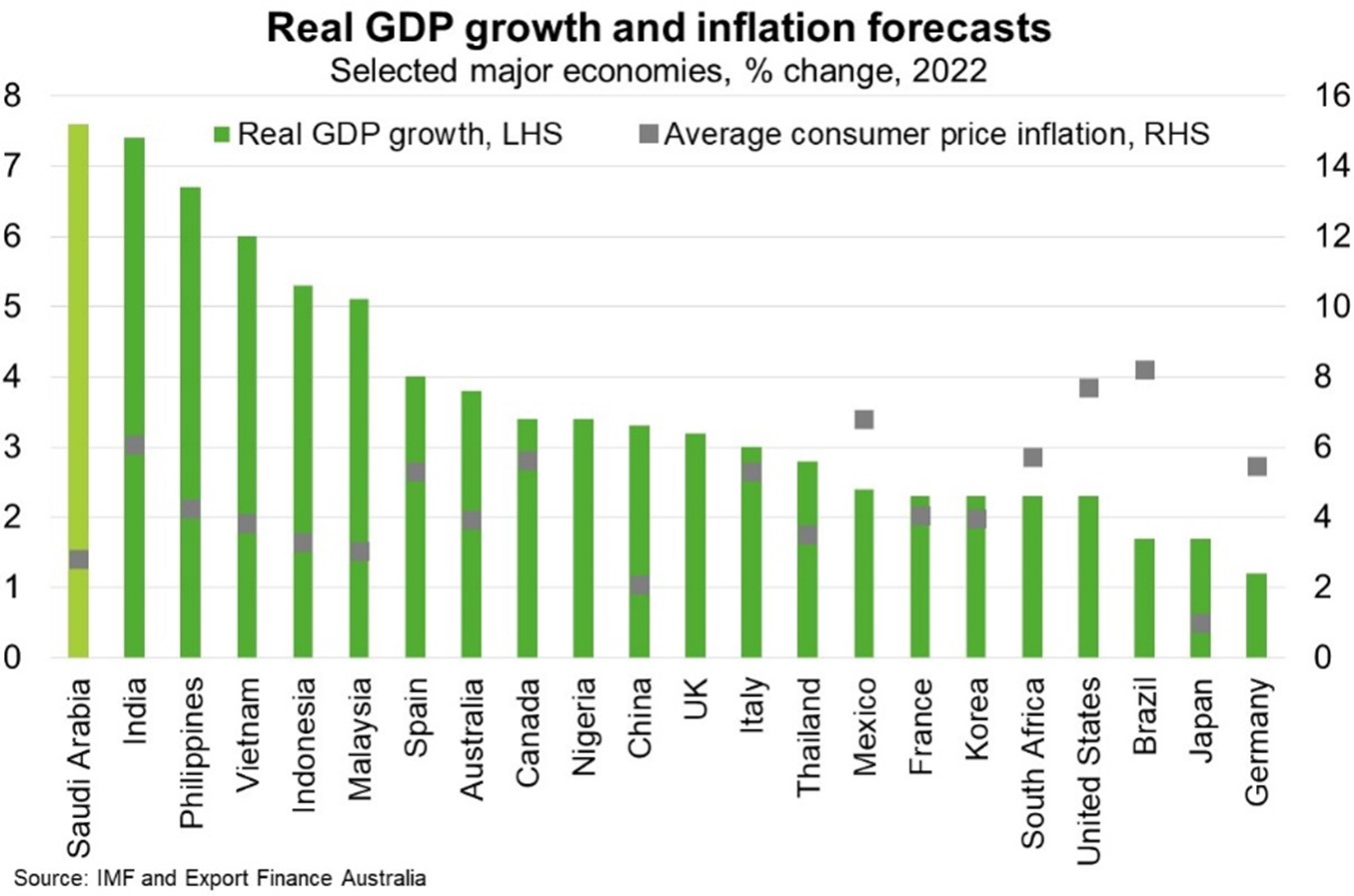Saudi Arabia—Economic outperformance and ambitious reform agenda
The IMF expects Saudi Arabia to be the world's fastest-growing major economy in 2022, outperforming dynamic Asian giants like China, India and Indonesia and the G7 and other major emerging markets (Chart). The economy has recovered strongly from a deep pandemic-induced recession, boosted by high energy prices and rising oil and gas production, policy support and an extensive COVID-19 vaccination program. The financial sector is resilient, public finances are improving, and inflation remains contained. Indeed, inflation is expected to average 2.8% in 2022, which together with China and Japan, will be the lowest rate among the world’s largest economies (Chart). Higher inflows of energy revenues and investment will blunt the dampening effects of domestic interest rate hikes (needed to protect the US dollar exchange rate peg) on the Saudi economy. Meanwhile, an enormous current account surplus (US$177 billion in 2022, up from US$44 billion in 2021) will help lift foreign reserve buffers back toward pre-pandemic levels.
The ambitious structural reform agenda under Vision 2030 is essential to support the longevity of non-oil growth over the medium term. The authorities have taken important steps to improve the regulatory and business climate, attract foreign investment and boost private sector participation in the economy. This includes efforts to improve governance, reform labour markets, enhance industrial facilities, and digitalise government operations. Though these measures have yet to translate into significantly stronger FDI inflows and diversification into higher-value-added industries, Saudi Arabia’s positive economic outlook offers significant export opportunities. For instance, in the food and agribusiness, mining, infrastructure, education and health, tourism and hospitality, transport and logistics, energy and derivatives, industrial manufacturing and consumer and business services sectors. Saudi Arabia purchased $2.1 billion of Australian goods and services in 2021 (predominantly barley, wheat and beef), almost double the 2020 figure, ranking it as Australia’s 25th largest export market.

